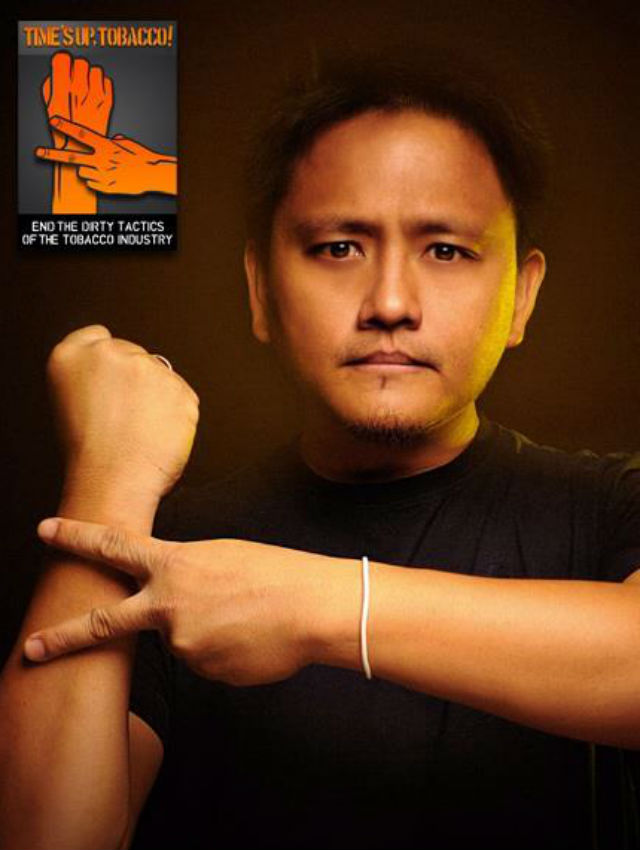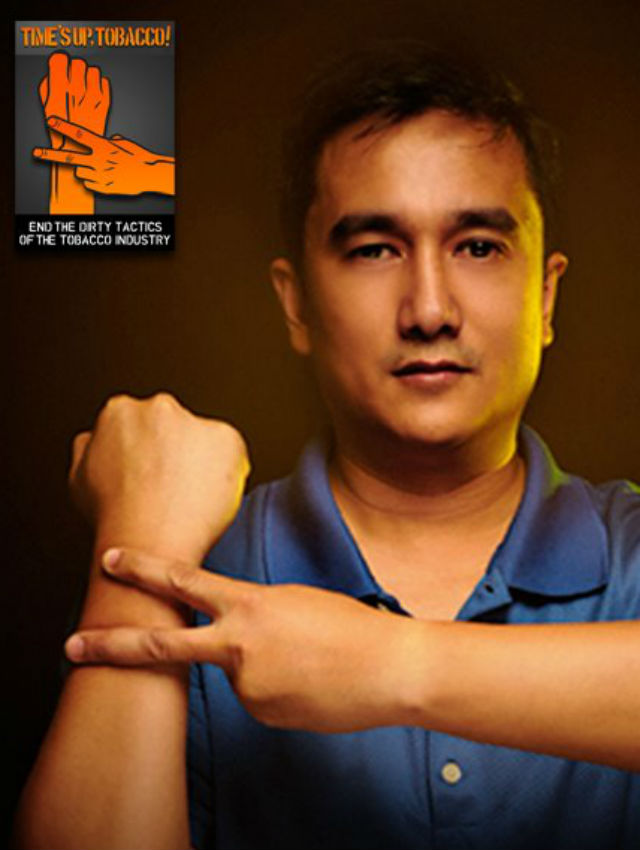SUMMARY
This is AI generated summarization, which may have errors. For context, always refer to the full article.
 There is a joke that goes, “It’s easy to quit smoking, ask any smoker around – they’ve done it hundreds, maybe thousands of times.” There’s both truth and pain in that joke, and for smokers, it’s not a laughing matter.
There is a joke that goes, “It’s easy to quit smoking, ask any smoker around – they’ve done it hundreds, maybe thousands of times.” There’s both truth and pain in that joke, and for smokers, it’s not a laughing matter.
As 2014 begins, millions will resolve to quit smoking. Research from the University of Scranton’s Journal of Clinical Psychology says that giving up smoking is the 7th most common resolution of 2014. However, according to the same study, only 8% of new year resolvers are actually successful in achieving their resolutions.
Psychology professor John Norcross of the University of Scranton says that it is one’s self-efficacy, or the personal belief in one’s ability to succeed at something, which determines one’s resolution success. For smokers, however, there’s more than just willpower to consider. The nicotine in cigarettes makes them highly addictive, and tobacco companies are banking on that addiction to sustain their profit. In fact, the Harvard School of Public Health reported that nicotine found in cigarettes increased by an average of 1.6% each year, or about 11% over a 7-year period (from 1998-2005). This is why so many still smoke despite knowing that it can kill them: they cannot help themselves.
If you are battling with your cigarette addiction or if you know someone who is, have them read this: smoking can be beaten. Here are stories of 3 people who have quit cigarettes and put that toxic addiction behind them.
Confronting the truth in the face of an uncle’s death

“I was about 13 when I started smoking, around the time I was in 2nd year of high school,” said Vin Dancel, lawyer and front man of Filipino rock band Peryodiko. “I did it out of curiosity and a sense of ‘pa-rebelde.’ “It wasn’t habitual when I started…but I smoked every chance I got. It was easy to buy cigarettes in the province. Vendors thought I was only being asked to buy,” he recalled. “At my worst, I was smoking about 2 packs a day.”
“I couldn’t remember how smoking made me feel then, but I do remember that come the next day, my throat would hurt,” he shared. “But it seemed bad ass at the time.”
Vin got his wake-up call when his Uncle Jun, also a smoker, got lung cancer and passed away due to complications caused by the disease. “I remember that he took care of me while I was in high school. I saw him deteriorate. It was sad,” he said.
“I quit because I didn’t want to have lung cancer,” said Vin. “I had my last cigarette one year and seven months ago. It was very hard for me to quit because I was a nicotine addict for over 25 years.”
“I quit cold turkey,” Vin shared. “But I did it systematically and carefully. I tried and failed so many times before tumagal nang ganito. I didn’t start out by saying ‘I quit forever’ because I knew that would be tough on my psyche. Instead, I quit every day. Every morning, I wake up and say ‘okay, today I won’t smoke.’ That was easier for me,” he added.
“I mentally, emotionally prepared myself for my smoking triggers: I knew I wanted to smoke when I had a bad mood, when I was contemplating, writing or when I was stressed,” he said. He made sure to condition himself during these times so that he wouldn’t be tempted to smoke.
“I learned that nicotine gets totally flushed out in about 72 hours and so that’s when withdrawal symptoms would start. I learned that a crave only lasts for 3 minutes and that in the first month, you would normally crave for cigarettes at least 12 times a day. I knew that because of withdrawals, there’s a time stretch in your head. The 3 minutes seem longer and more unbearable because your body is craving for nicotine,” Dancel shared.
“Every time I hit a crave, I just check my watch and tell myself that I only have to ride it out for 3 minutes. That’s how I got by – conquering one crave at a time, one day at a time,” he said.
Vin advises smokers who want to quit to look up cigarette-related diseases, since those were what convinced him to finally give up smoking. “I’ve been trying to quit for over a decade now and this is the longest that I’ve been successful. It’s hard but it’s worth it. I feel really, really good now.”
Losing a father to smoking

Ruben Carlo Asuncion was never a smoker, but he grew up with someone who was: his father Teotimo “Tim” Asuncion was a smoker who died of a heart attack caused by his addiction.
“I remember when I was in Grade 3 buying my father cigarettes from a local store,” he shared. “It was so easy to buy them, even as a child. Then, I thought smoking was just fine. It didn’t occur to me how harmful it really was.”
He would learn of the harms caused by smoking much later.
“My father quit smoking after having his first heart attack at around 45 years old,” Asuncion said. “He did have another heart attack about two to 3 years after, but the fatal one came when he was 49 years old. He wasn’t so lucky the third time,” he added.
It was only after his father passed away that he was able to grasp the severity of smoking’s toll. “I never really thought about the direct effect of smoking until I was involved in tobacco control research,” he said. “Our father died from a massive heart attack mainly due to the direct, damaging, and lethal effects of cigarette smoking to the heart.”
In 2011, 20 years after losing their father, Carlo along with his siblings Ron and Wewe formed Team Asuncion, a running group meant to promote an active and vibrant lifestyle, and to campaign for a 100% smoke-free Philippines.
For those who are having a hard time to quit, Carlo says, “Just stop. And try to complete your story. Decide to stop and complete your story by looking at those who failed to quit and those who started early. Only you can be in charge of that decision.”
Losing his voice to tobacco
“My dad died of colon cancer – he was a heavy smoker too,” said Emer Rojas, laryngeal cancer survivor and President of the New Vois Association of the Philippines (NVAP), an organization composed mainly of cancer victims who attribute their illness to tobacco use. “I started smoking at the age of 17, which was considered quite old at that time. Most youths began smoking at age 13 then. I started because of peer pressure – I wanted to be ‘one of the gang’,” he said.
“I remember in the first few months I usually got dizzy after smoking. I started with one to 3 sticks a day, progressed to 5 sticks daily then, barely a year after, I graduated to being a pack-a-day smoker,” Rojas shared.
“I was so hooked on cigarettes that even laryngeal cancer failed to convince me to quit smoking. I still continued smoking for several months, even after being diagnosed with cancer. I quit only because I had no choice. I smoked my last cigarette the night before I had my surgery on Dec 10, 2002,” said Rojas.
“After my larynx was removed, I literally couldn’t smoke anymore,” Rojas said. “I now breathe through a hole in my neck. Smoking is no longer feasible because my mouth now only leads to the stomach and there is no connection to the lungs anymore.”
Once a radio announcer, Rojas now speaks through an electrolarynx. He continues to speak out against the tobacco industry through NVAP. Despite everything, he still counts himself as lucky. “I feel more focused and relatively ‘younger’ than my age,” he said.
Emer gave this advice to smokers who want to put smoking behind them: “You can do it. I know how hard it is to quit. But it would be even more difficult if one gets sick. If you are the breadwinner of the family, think about what will happen to your family if they lose you. It would help a lot in starting to quit,” he said.
Rojas believes that placing graphic health warnings on cigarette packs will go a long way in motivating smokers to quit cigarettes for good. “Placing pictures on cigarette packs will save lives. I know, because as a former chain smoker, I looked at that cigarette pack at least 20 times a day – maybe even more. “Many smokers disregard the vague text warnings on cigarette packs now. If graphic health warnings were on packs then, maybe I wouldn’t have waited till I got cancer to quit smoking.”
Watch this video to understand the Time’s Up, Tobacco! campaign.
– Rappler.com
Sophia Lee is a communications consultant for the non-profit public health policy organization HealthJustice. The organization aims to make public health policies more effective by bridging the gap between health and law, linking legal and medical experts with policy creators to ensure a world-class standard of health for all Filipinos.
Vin, Carlo, and Emer are among the many ambassadors of a campaign called Time’s Up, Tobacco!, a public movement meant to make tobacco companies accountable for the death and disease that their products cause, both to smokers and non-smokers alike. To know more about the campaign, visit www.timesuptobacco.com and https://www.facebook.com/TimesUpTobacco. You can also follow https://twitter.com/timesuptobacco.
Add a comment
How does this make you feel?
There are no comments yet. Add your comment to start the conversation.